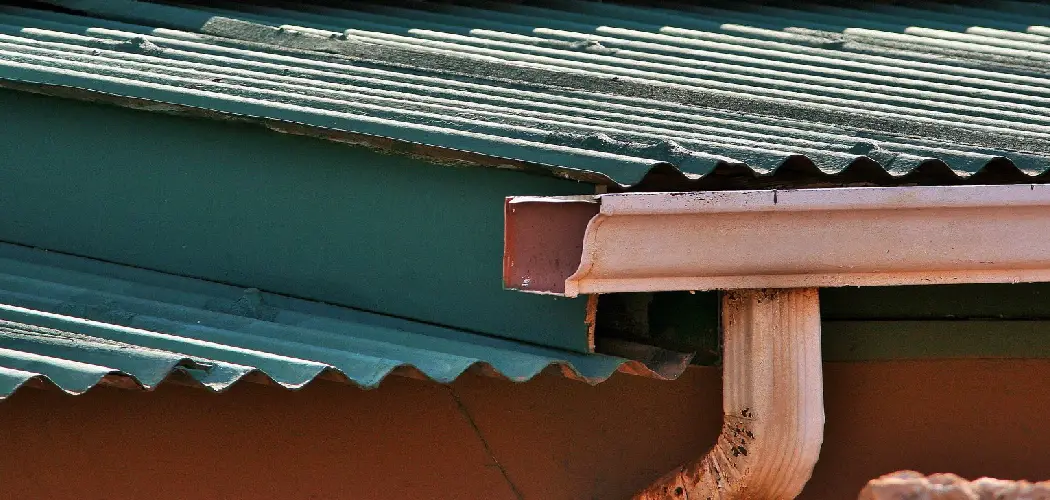Installing gutters on a metal building is important in maintaining and protecting the structure. Gutters are designed to collect rainwater and direct it away from the building, preventing water damage and potential flooding. Without gutters, water can pool around the building’s foundation, leading to moisture issues and potentially compromising the structural integrity.
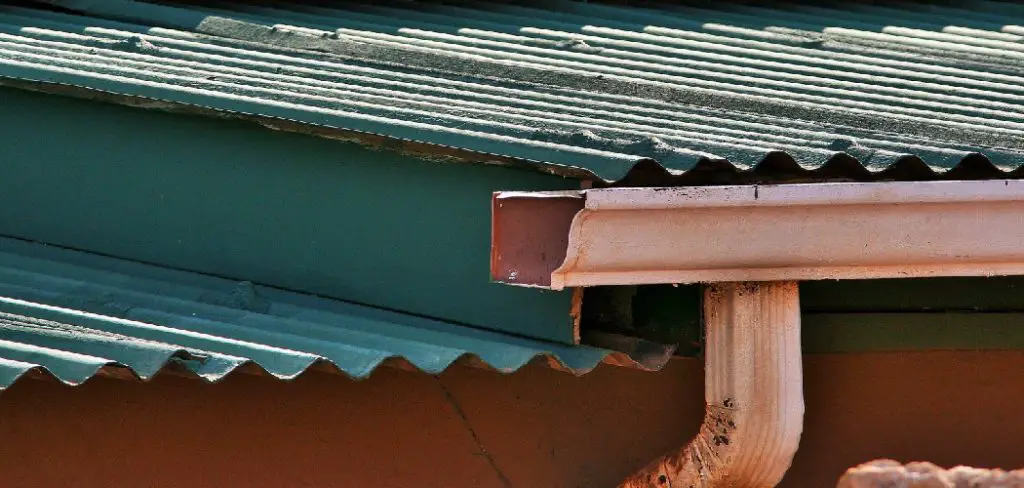
The main advantage of installing gutters on a metal building is to protect the structure from water damage. Metal buildings, especially those used for industrial or commercial purposes, are often subjected to heavy rain and snowfall. Without proper gutter systems in place, this can cause significant damage over time. In this blog post, You will learn in detail how to install gutters on a metal building.
Types of Guttering That is Best for a Metal Building
Guttering is an important aspect of any building, and metal buildings are no exception. Without proper guttering, rainwater can damage a metal building’s foundation, walls, and even roof. Therefore, selecting the right type of guttering for your metal building is crucial.
Types of Guttering:
- PVC Gutters: Polyvinyl chloride (PVC) gutters are popular for metal buildings due to their durability and affordability. They are resistant to corrosion, UV rays, and extreme weather conditions, making them a long-lasting option for guttering.
- Steel Gutters: As the name suggests, steel gutters are made from galvanized steel that is coated with zinc to prevent rusting. They are a strong and sturdy option for metal buildings but can be expensive.
- Aluminum Gutters: Aluminum gutters are lightweight, cost-effective, and easy to install. They are resistant to corrosion and require minimal maintenance, making them a popular choice for metal buildings.
- Copper Gutters: Copper gutters are a premium option for metal buildings due to their aesthetic appeal and durability. Over time, they develop a natural patina, giving your building a unique look. However, they can be quite expensive compared to other types of guttering.
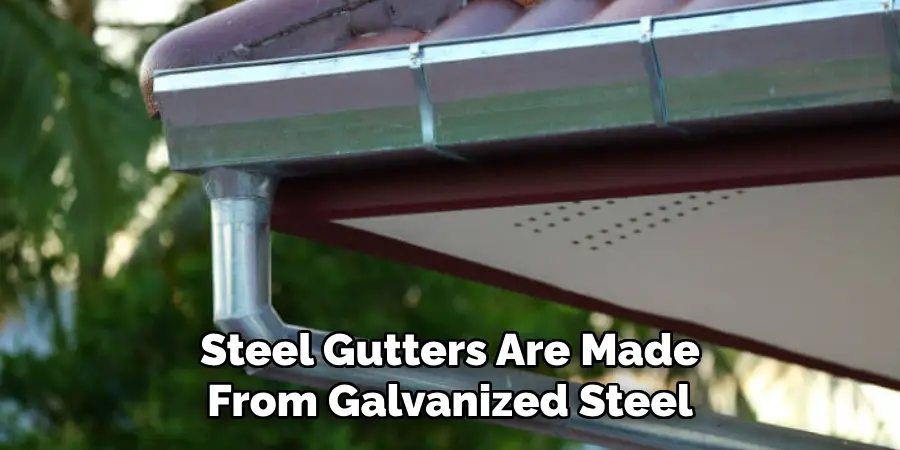
Factors to Consider
When choosing the right type of guttering for your metal building, there are a few factors to consider:
- Climate: Consider your region’s climate and choose guttering suitable for extreme weather conditions.
- Maintenance: Some guttering options require more maintenance than others. Consider how much time and effort you can dedicate to maintaining your gutters.
- Budget: Different types of guttering come at different price points. Consider your budget and choose an option that fits within it.
- Aesthetics: If the appearance of your building is important to you, consider how different types of guttering will look on your metal building.
Before making a decision, consider factors such as durability, maintenance, budget, and aesthetics. Consult with professionals to determine the best option for your specific building needs. Properly installed and maintained guttering will not only protect your metal building but also enhance its overall look and longevity.
Step-by-step Instructions for How to Install Gutters on a Metal Building
Step 1: Inspect Your Metal Building
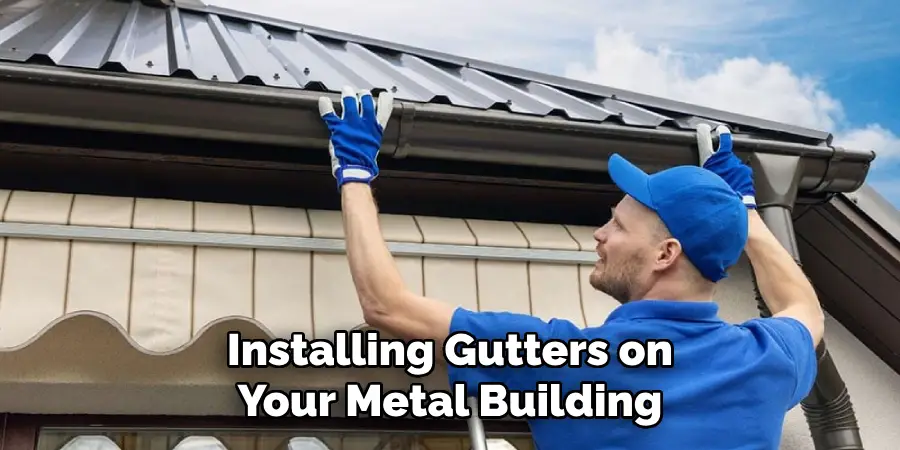
Before you start installing gutters on your metal building, it is important to thoroughly inspect the building. Look for any signs of damage or areas that may need extra attention during the installation process. Check for loose screws, rust, and any other issues that could affect the stability of your gutters.
Step 2: Gather Supplies
Next, gather all the necessary supplies for the installation. This may include gutters, downspouts, end caps, brackets, screws, and sealant. Ensure you have enough of each item for your building’s size and shape.
Measure the length of each side of your metal building where you will be installing gutters. Using a hacksaw or tin snips, cut the gutters to fit these measurements. It is important to make precise cuts to ensure your gutters’ proper fit and function.
Step 3: Install Brackets
Using a drill, attach the brackets to your metal building at regular intervals along the length of each side. These brackets will hold the gutters in place. Next, attach the end caps to each end of the gutters using screws. These end caps will prevent water from escaping out the sides of the gutters.
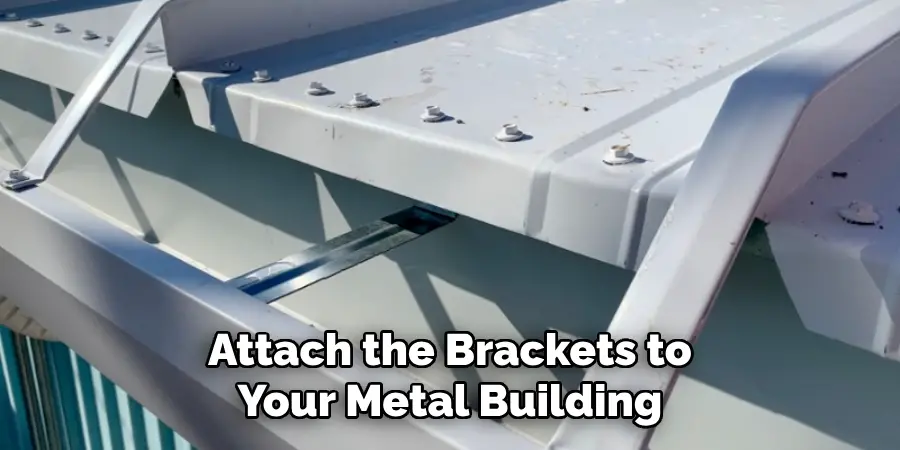
Step 4: Install Downspouts
Measure and cut downspouts to fit between your building’s gutter system and the ground. Attach them to the building using screws or brackets. Carefully place the gutters onto the brackets and secure them in place using screws. This step may require a helper to hold the gutter while you attach it.
Step 5: Seal Seams
To prevent water from leaking through the seams of your gutters, apply sealant along all joints and connections. Once all the gutters are securely in place, test the system by pouring water into them and ensuring it flows properly through the downspouts. Make any necessary adjustments or repairs.
Step 6: Regular Maintenance
To ensure your gutters continue to function properly, it is important to perform regular maintenance, such as cleaning out debris and checking for any damage. This will help prevent clogs and potential water damage to your building.
By following these simple steps, you can easily install gutters on your metal building and protect it from potential water damage. Remember to always follow safety precautions while working at heights and consult a professional if you need clarification on any aspect of the installation process.
Safety Tips for How to Install Gutters on a Metal Building
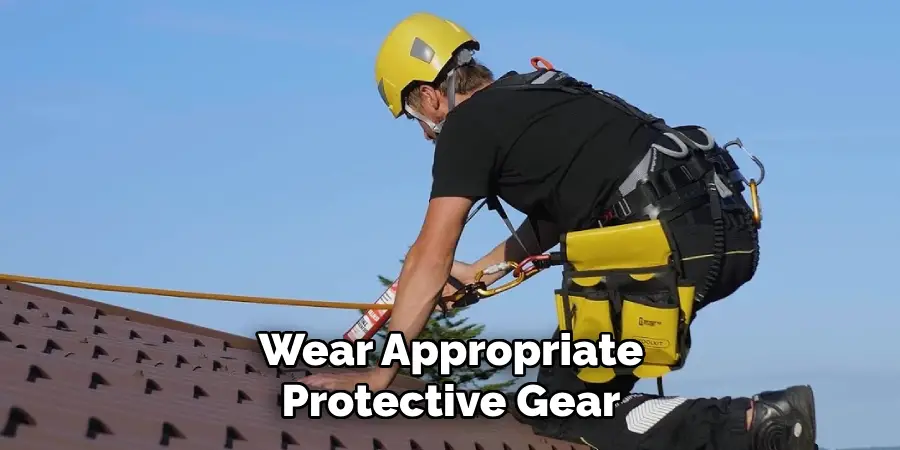
- To protect yourself from sharp edges and falling debris, wear appropriate protective gear, such as gloves, safety glasses, and a hard hat.
- Before starting the installation process, make sure the metal building is structurally sound and can support the weight of the gutters.
- Proper lifting techniques should be used when handling heavy materials to avoid strains or injuries. Consider using machinery or asking for help if needed.
- Be aware of any nearby power lines and take precautions to avoid contact. When working near power lines, it is recommended that you use non-conductive ladders and tools.
- When using a ladder, ensure it is securely placed on a flat surface and always have someone hold the base for added stability.
- Use caution when cutting or drilling into the metal building. Wear eye protection and follow proper safety procedures.
- Use weather-appropriate precautions. Avoid installing gutters during inclement weather or strong winds, as this can be dangerous and affect the quality of the installation.
Following these safety tips and taking proper precautions can ensure a safe and successful gutter installation on your metal building. It is important to prioritize safety at all times during the installation process to avoid any accidents or injuries.
Potential Risks or Safety Hazards Associated With Installing Gutters on a Metal Building
There are several potential risks and safety hazards that should be considered when installing gutters on a metal building. These include:
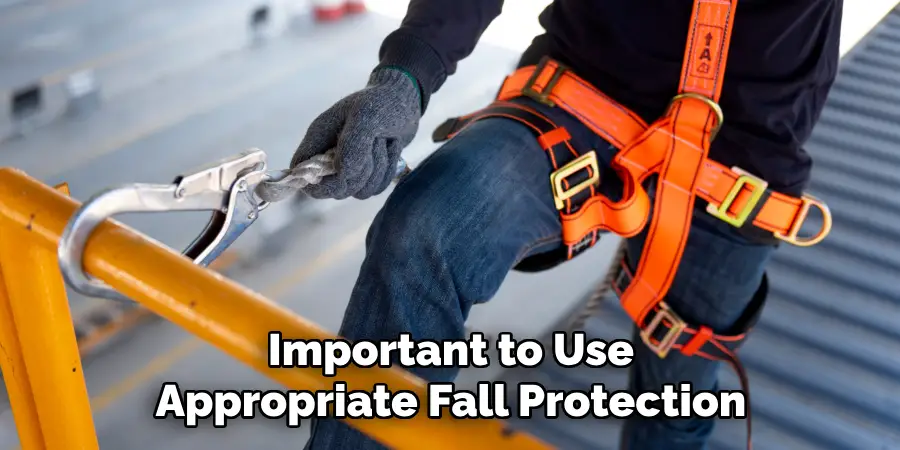
- Working at Heights: Installing gutters on a metal building will require working at heights, which can increase the risk of falls and other injuries. To minimize this risk, it is important to use appropriate fall protection equipment and follow proper safety protocols.
- Sharp Edges and Corners: Metal buildings often have sharp edges and corners that can pose a risk of cuts and other injuries. Careful handling and use of protective gear, such as gloves, can help reduce the likelihood of these types of injuries.
- Electrocution: If the metal building has electrical wiring or equipment installed, there is a risk of electrocution if proper precautions are not taken. Identifying and avoiding any electrical hazards is important before starting the installation process.
- Wind and Weather Conditions: Installing gutters on a metal building can be challenging in windy or adverse weather conditions. These conditions can increase the risk of accidents, such as slips and falls, as well as damage to equipment or materials. It is important to carefully assess weather conditions and take appropriate precautions to ensure a safe installation process.
- Working With Heavy Materials: Metal gutters can be heavy and difficult to maneuver, especially when working at heights. This can increase the risk of strains, sprains, and other musculoskeletal injuries. Proper lifting techniques and the use of equipment, such as pulleys or lifts, can help reduce these risks.
- Use of Tools and Equipment: Installing gutters on a metal building will require the use of various tools and equipment, such as ladders, drills, and saws. Improper use or maintenance of these tools can lead to accidents and injuries. It is important to follow manufacturer instructions and safety protocols when using any tools or equipment.
- Working With Chemicals: Some types of gutters may require the use of chemicals for cleaning or installation purposes. It is important to carefully read and follow all safety instructions when handling these chemicals to avoid skin irritation, respiratory problems, or other health hazards.
Overall, it is crucial to prioritize safety when installing gutters on a metal building. This includes proper training, appropriate equipment and protective gear use, and careful assessment of potential risks before installation. Being aware of these potential hazards and taking necessary precautions can help ensure a safe and successful gutter installation on your metal building.
Maintenance Tips or Recommendations for Keeping Gutters on a Metal Building in Good Condition
Regular maintenance is necessary to maintain the integrity and functionality of gutters on a metal building. Here are some tips and recommendations for keeping your gutters in good condition:
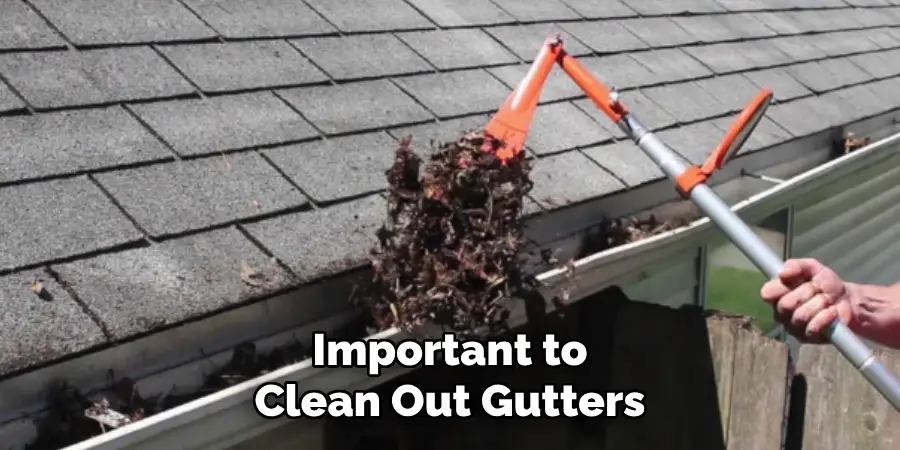
- Clean Gutters Regularly: Debris, such as leaves, twigs, and dirt, can accumulate in gutters over time, leading to clogging and potential damage. It is important to clean out gutters at least twice a year, especially in the fall and spring when there is more debris. Use a ladder or extension pole to reach the gutters and remove any buildup.
- Inspect for Damage: Regularly inspect your gutters for any signs of damage, such as cracks, holes, or loose sections. These can affect the functionality of your gutters and should be repaired as soon as possible to prevent further damage.
- Repair or Replace Damaged Parts: If you notice any damage during your inspection, it is important to address it promptly. Small cracks or holes can be patched with sealant or gutter repair tape. For larger damage, replacing the affected section of the gutter may be necessary.
- Check for Proper Drainage: Make sure that your gutters are properly draining water away from your building’s foundation. If you notice pools of water or overflowing gutters, it may be a sign of clogging or improper installation.
- Trim Nearby Foliage: Trees and other vegetation can contribute to debris buildup in gutters. Keep nearby trees and shrubs trimmed to prevent leaves and branches from falling into gutters.
- Consider Gutter Guards: Installing gutter guards can help prevent debris from entering gutters and reduce the frequency of cleaning. Various types are available, so be sure to research and choose one that is compatible with your gutters.
- Regularly Inspect for Rust: Metal gutters are susceptible to rust, weakening the material and leading to leaks or damage. Regularly inspect your gutters for any signs of rust and promptly address it with a rust converter or primer to prevent further corrosion.
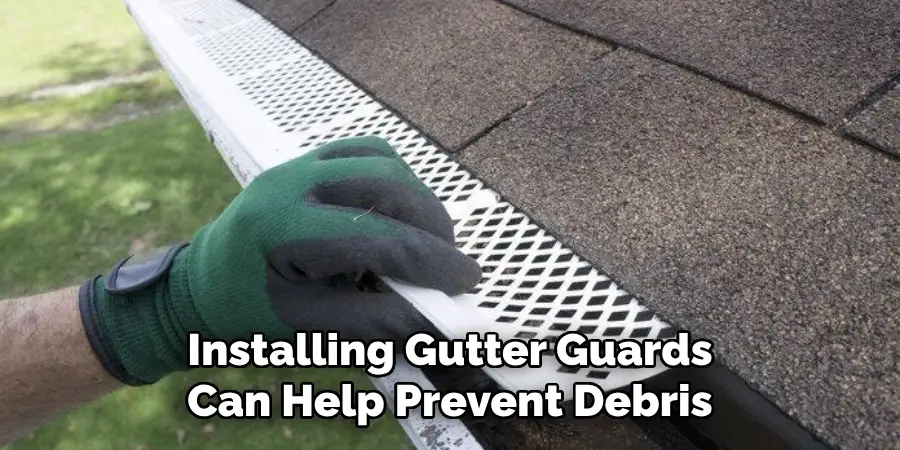
By following these maintenance tips and recommendations, you can help ensure that your gutters on a metal building remain in good condition and function properly for years to come. Consider creating a regular gutter maintenance schedule to stay on top of these tasks and prevent any potential issues.
Is It Necessary to Hire a Professional to Install Gutters on a Metal Building, or Can It Be Done as a DIY Project?
There are several factors to consider before making this decision. First and foremost, you need to assess your own skill level and experience with home improvement projects.
Installing gutters on a metal building may seem like a simple task, but it requires precision and knowledge of the specific techniques and tools needed for this type of installation. If you have prior experience with similar projects, you may be able to confidently take on the task.
On the other hand, if you are new to DIY projects and do not have much experience with tools and construction, it may be best to hire a professional. Improper installation of gutters can lead to costly damage to your metal building in the long run. Professionals have the expertise and experience needed to ensure that the gutters are installed correctly and efficiently.
Common Mistakes to Avoid When Installing Gutters on a Metal Building
- Not Measuring Correctly—Properly measuring the width and length of your metal building is crucial when installing gutters. Failure to measure accurately can lead to issues such as gaps or leaks in your gutter system.
- Choosing the Wrong Type of Gutters—There are various types of gutters available, including K-style, half-round, and box gutters. Each type has advantages and disadvantages, so it’s essential to choose the right one for your metal building based on factors such as climate and budget.
- Not Considering the Slope—Gutters need to have a slight slope towards the downspout for water to drain properly. If you don’t factor this in during installation, water can pool and damage your metal building and the gutter system itself.
- Using Low-quality Materials – While it may be tempting to save money by using cheaper materials, this can end up costing you more in the long run. Low-quality gutters can easily become damaged and require frequent repairs or replacements, leading to additional expenses.
- Forgetting About Maintenance – Gutters require regular maintenance to function properly. Refrain from cleaning them out regularly or ignoring signs of damage can result in clogged gutters, leaks, and potential structural damage.
- Not Hiring a Professional – Installing gutters on a metal building may seem simple, but it’s best left to professionals with the expertise and experience. Attempting to do it yourself can lead to mistakes and potentially cause damage to your building.
- Ignoring Weather Conditions—When installing gutters on a metal building, it’s important to consider the weather conditions. Extreme temperatures or heavy rainstorms can make installation more difficult and may require additional precautions.
By avoiding these common mistakes, you can ensure a successful and long-lasting gutter system for your metal building. Remember to carefully measure and choose the right type of gutters, consider the slope and weather conditions, and properly maintain your gutters over time. If in doubt, feel free to seek professional help to ensure the job is done correctly.
Conclusion
In conclusion, installing gutters on a metal building may seem daunting, but with the right tools and techniques, it can be easily accomplished. However, as with any project, certain disadvantages should be considered before starting the installation process.
One major disadvantage is the cost associated with installing gutters on a metal building. Depending on the size of the building and the materials used, the cost can quickly add up.
Additionally, if not installed properly, there is a risk of leaks or other issues, which can lead to additional expenses in repairs. Reading this post has helped you learn how to install gutters on a metal building. Make sure the safety precautions are carried out in the order listed.
I am Rick. I grew up helping my dad with his handyman service. I learned a lot from him about how to fix things, and also about how to work hard and take care of business. These days, I’m still into fixing things- only now, I’m doing it for a living.
I’m always looking for new ways to help people grow and develop. That’s why I have created this blog to share all my experience and knowledge so
that I can help people who are interested in DIY repair.

